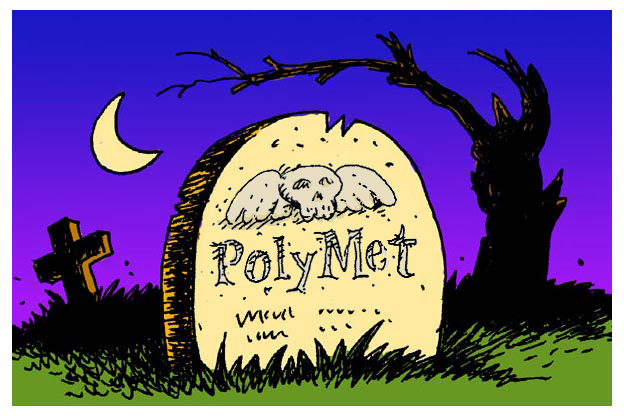

Begging your pardon, Tom
Says the Black Swan
Of the 2,200 page Supplemental Environmental Impact Statement issued on Friday last, DNR Commissioner Tom Landwehr said, it is “not a decision-making document.”
The public might be confused into thinking it is, Commissioner, because it’s the last one we’re likely to see before the decision is made by you and others whether to issue permits to mine. It’s the final document we’ll be able to comment on before the whole thing get taken private.
And Commissioner, you seem to be a believer in the Miracle of the Immaculate Extraction, which concerns a lot of us, um, a lot.
So you can see why we’re leery of your remarks. The Strib editorial writers swallowed it, more or less, so good on you for that, I guess. That’s also the view of Frank Ongaro, the executive director of MiningMinnesota, one of those no-visible-means-of-support Astroturf organizations you hear so much about. Look for it here, if you want, kids.
Lee Schafer put his finger on it, though, in a recent column in the Strib. In 2,200 pages, PolyMet says almost nothing about how it is going to assure us that it will keep the place clean, especially after it leaves.
The issue is one of the most important in the whole decision, and I don’t know about you, kids, but I am not willing to leave it to backroom discussions between Tom Landwehr and the stock-optioned Brad Moore (Exec. VP of PolyMet and former MPCA Director under Tim Pawlenty).
The PolyMet company that holds the mine assets in Minnesota is what can, as I said before, charitably be called a shell. It could never, in its entire miserable life, put up an adequate financial surety for the 200 to 500 years of water clean up after the mine closes. Even AIG wouldn’t do it. And that should tell you something.
PolyMet’s water treatment plan relies on reverse osmosis, a fancy term for squirting water through a canister filled with media to catch the bad stuff. And by all accounts, it works pretty well if, and it is a really big if, you catch all the water and run it through the process.
And as long as the pumps are running.
And nothing goes unexpectedly wrong.
One thing you can count on in any human endeavor, though: things will go wrong, sometimes in catastrophic and and unpredicted ways. Just ask the Black Swan.
Even discounting the Black Swan, there are lot of entirely predictable ways things can and — let’s be direct — will go wrong. The tailings basin that PolyMet is relying on may fail, catastrophically, or incrementally, as it is already doing. Sulfides that leach from rainfall on Brimstone Mountain may enter the water either directly on the surface or though fissures in the bedrock.
But here’s the one you can count on: when the mine closes in 20 years, after a decent interval, PolyMet will just turn off the pumps. It has happened many times around the country. One of my favorite stories about shutting off the pumps happened in South Carolina, not that long ago. A company called Nevada Goldfields, Inc. opened an open pit mine, and before long the whole thing became a cropper. The mine operator, undoubtedly a junior mining company, just like PolyMet, went bankrupt. It had a spiffy reverse osmosis water-cleaner-upper, too. The manufacturer Siemans was really proud of it:
Challenge
In order to expand operations and maintain a water balance in South Carolina’s wet climate, Nevada Goldfields’ Barite Hills [sic] gold mining operation required a treatment plant to handle its wastewater. At this mining site, the company extracts gold from soil using a high pH cyanide leaching solution. The process generated large volumes of cyanide and metal laden wastewater, which they had been storing on-site. Nevada Goldfields needed to reduce the levels of many heavy metals to the part per billion (ppb) range.
Solution
Nevada Goldfields investigated several technologies that would reduce the metals to acceptable limits. Treatability testing showed that a combination of reverse osmosis and ion exchange reduced metal levels to meet the required limits for all parameters of concern. Installation includes a full-scale, 25 gpm system with two multimedia filters to remove metals and solids to less than 1 mg/L, two carbon adsorption filters to remove organic contaminants and finally, reverse osmosis and ion exchange equipment to remove salts, metals and dissolved solids before the water is discharged into the environment. The reverse osmosis concentrate is rerouted to holding ponds at the site.
Results
The system has been operating since December 1994. Siemens Water Technologies, formerly USFilter, and Nevada Goldfields worked together to value engineer [the whole deal was “value engineered” all right] the treatment system, thus providing the necessary procurement flexibility to minimize capital expenditures. To best meet its financial objectives, Nevada Goldfields purchased the multimedia filtration and carbon adsorption equipment. They lease the reverse osmosis unit and buy the ion exchange canister services from Siemens.
Siemans wasn’t so proud of of its reverse osmosis system that it continued to run it after Nevada Goldfields went bankrupt. Oh no. A few years later, the mine got a new name: Superfund site.
PolyMet will go bankrupt, too. After the mine closes and all the precious financial fluids have been drained out of it, there is no reason for its parent, and its real parent, Glencore/Xstrata to keep it alive.
Then it will probably get a new name, too!
Thanks for your feedback. If we like what you have to say, it may appear in a future post of reader reactions.

